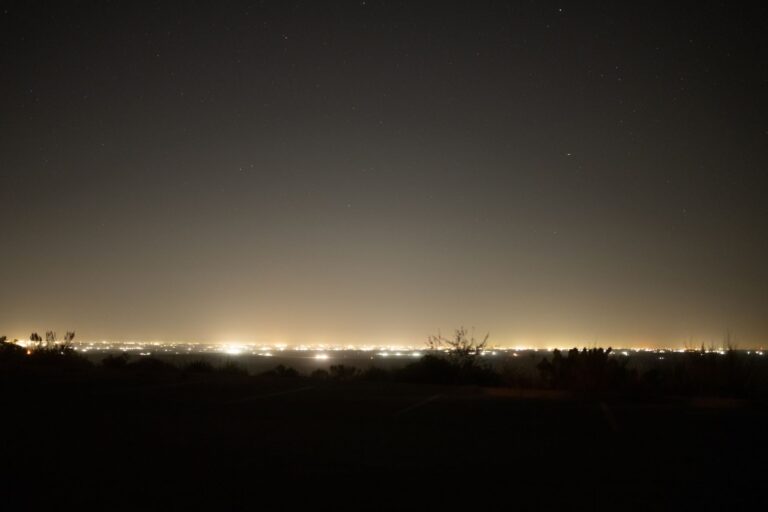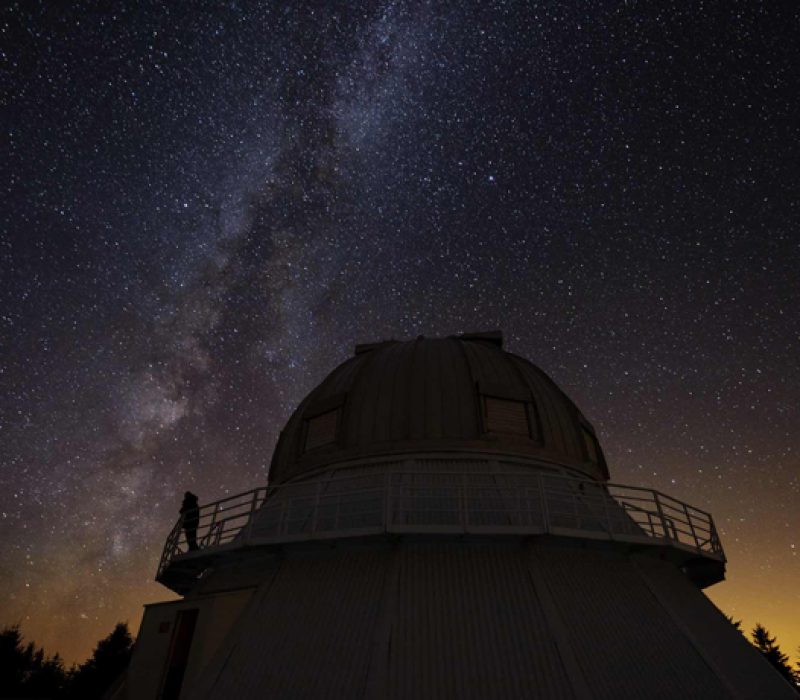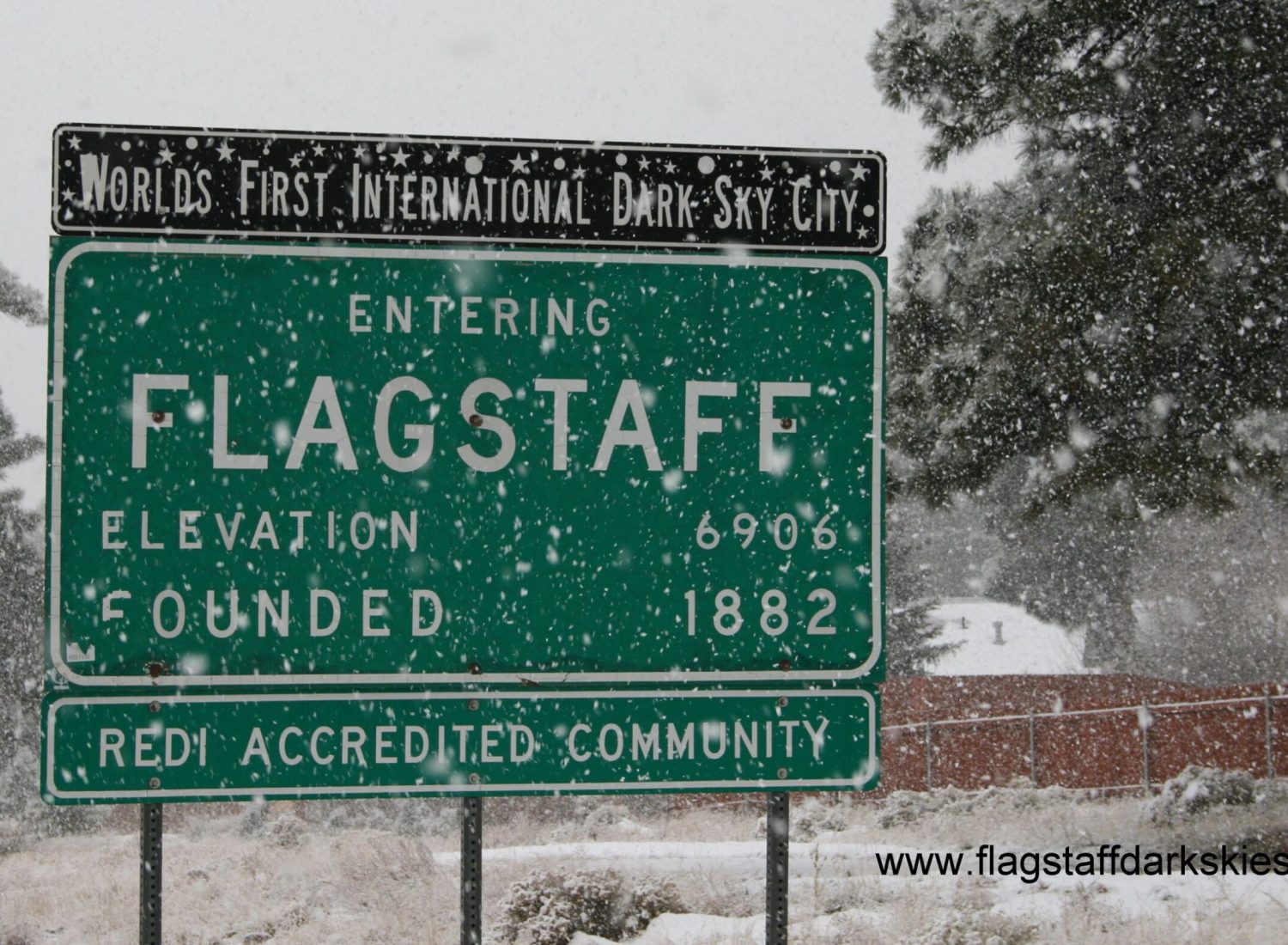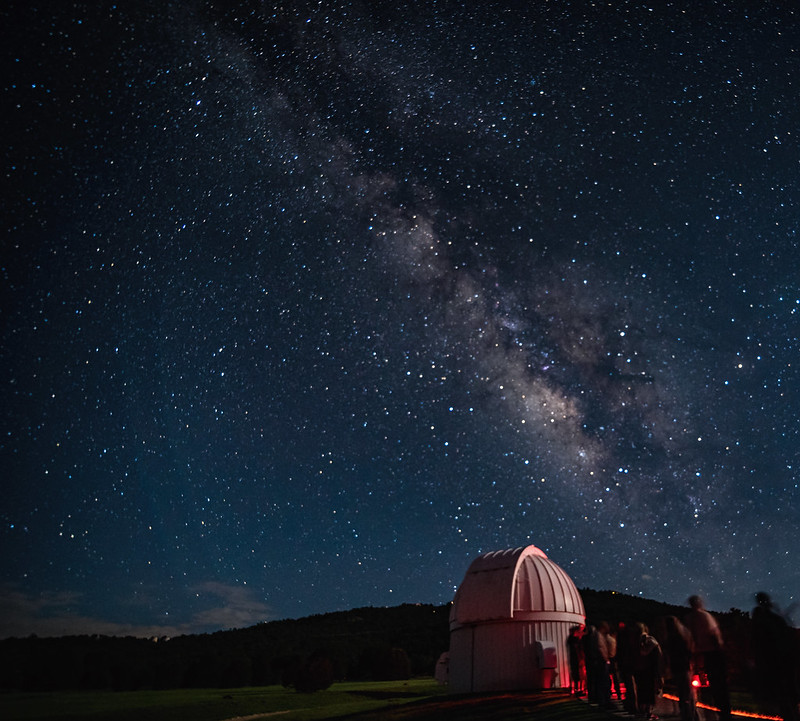Light Pollution
Most people today can see only a few stars due to the increasing brightness of the night sky from artificial sources. The brighter the night sky, the less one can detect faint objects. Light pollution is a growing threat even at some of the most remote and technologically advanced astronomical observatories in the world.
Light pollution matters for reasons beyond astronomy. The night sky is an important cultural resource and source of inspiration. Excessive artificial light at night can have adverse effects on both the environment and human well-being. Poor lighting practices waste energy, contributing to greenhouse emissions. Addressing this issue is essential for promoting sustainability, protecting biodiversity, and preserving the aesthetic and functional aspects of the natural world.
Solutions
Easy solutions to light pollution exist that do not require living in darkness. Light pollution can be dramatically reduced by following these Five Principles for Responsible Outdoor Lighting:
1. Purpose: Use light only if it is needed. Consider the impact light will have on the surrounding area and if alternatives are available.
2. Shielding: Ensure lights are targeted and do not cast light upward or where it is unneeded or unwanted.
3. Intensity: Use only the minimum amount of light necessary for the task.
4. Color or Spectrum: Use amber-toned lights and minimize blue light emissions.
5. Timing: Use light only when it is needed.


Examples of Success
Mont Mégantic, Québec
Mont-Mégantic, the world’s first International Dark Sky Reserve, encompasses the municipalities of Granit and Haut-Saint-François and the city of Sherbrooke in Québec, Canada. It also includes the Mont-Mégantic National Park, its famous observatory and a unique visitor center. The process that led to its DarkSky International designation contributed to the development of a new regional expertise in outdoor lighting management. As a result, the Reserve’s 34 municipalities developed outdoor lighting regulations that have contributed to the control and limited growth of area light pollution, which had doubled during the preceding 20 years. Approximately 2,500 light fixtures were replaced leading up to the DarkSky certification process, resulting in a 25 percent reduction of area light pollution and a reduction in energy consumption of some 1.3 gigawatt-hours per year. The project is a model for many industrialized countries seeking a compromise between outdoor lighting needs and general concerns about energy efficiency and preservation of the natural nighttime environment.


Flagstaff, Arizona
Flagstaff was designated the world’s first International Dark Sky Community in 2001. The Flagstaff Dark Sky Coalition works with the city to celebrate, promote, and protect the glorious dark skies of Flagstaff and Northern Arizona through successful dark sky practices, including:
⦁ Developing and hosting public events to spread awareness of the beauty and value of the night sky.
⦁ Advocating for best practices for outdoor nighttime lighting to preserve dark skies while maintaining lighting effectiveness.
⦁ Providing regional, national, and global leadership through the example of “The Flagstaff Solution,” the local successes achieved in dark sky awareness and protection through effective policies and practices.
Big Bend, Texas
The Big Bend region of Texas is home to the famed Big Bend National Park, as well as McDonald Observatory, a unit of the University of Texas at Austin. The observatory and local communities have advocated for dark skies for decades. The town of Fort Davis, closest to the observatory, has had an outdoor lighting ordinance since 1976. In recent years efforts have expanded to include a roughly 28,000 square mile area, 15,000 of which is certified by DarkSky International as the Greater Big Bend International Dark Sky Reserve. The efforts include lighting in seven counties and eleven communities, multiple state parks and three protected lands in Mexico. McDonald Observatory worked with oil and gas facilities to adopt better lighting practices that enhance workplace safety while significantly reducing light pollution.


Tucson, Arizona
In the heart of downtown Tucson, Arizona, a city of nearly 500,000, one can view the Milky Way with the naked eye. Tucson and Pima County first adopted outdoor lighting ordinances in 1972 in an effort to provide standards so that night lighting did not interfere with nearby astronomical observatories. The Tucson/Pima County Outdoor Lighting Code (OLC) has been revised many times over the years and is a model for effective light pollution policy in mid-sized U.S. cities. In 2016-17 the city conducted a highly successful LED retrofit of some 19,500 municipally owned street lights, during which it measurably reduced skyglow as seen from nearby astronomical observatories.
More Information and Resources
Learn more about this topic on the following links:
- DarkSky International: the world’s leading NGO dedicated to reducing light pollution and promoting responsible outdoor lighting practices
- Illuminating Engineering Society: a professional society of lighting engineers and designers that promotes lighting standards and design best practices
- Colorado Plateau Dark Sky Cooperative: an organization bringing together naturalists, conservationists, land mangers, astrotourism operators and others in the Four Corners region to protect and celebrate area dark skies
- Globe At Night: a long-running program that collects observations of the night sky from citizen scientists all over the world to better understand how Earth at night is changing
- lightpollutionmap.info: an interactive map with overlays showing the extent of light pollution around the world
- International Dark Sky Places: a global, third-party certification program showcasing dark-sky best management practices
- IUCN Dark Sky Advisory Group: provides advice and guidance to and on behalf of the International Union for the Conservation of Nature, and to individuals and other bodies in regards to light pollution and dark sky values

